
Enjoying a delightful beverage beneath the cherry blossoms is one of the many wonderful ways to appreciate the spring season. Hanami means ‘flower-watching’ in Japanese and is a popular seasonal activity. Friends and family gather under cherry blossom trees at their peak to enjoy the fleeting beauty of their delicate flowers. Sadly, the cherry blossom season only lasts about two weeks. But the good news is that there are plenty of flowers in bloom during spring, ranging from the early magnolias, to apple blossoms and rhododendrons later in the season. The art of hanami can be practiced anywhere – just find a pretty tree, set up a blanket, and crack your favorite beverage!
It’s customary to bring shareable snacks and such to hanami parties in Japan like sake, bento boxes and wagashi sweets, but there’s nothing wrong with offering up something more adventurous. Aromatic white wines can also work wonderfully for these occasions. Snacks like the aforementioned wagashi, fruits and other brightly-flavored bites are a natural fit for sake, but savory offerings like onigiri rice balls, fried chicken, takoyaki grilled octopus dumplings, and tamagoyaki Japanese-style omelets can also be awesome partners for fruity, fragrant whites.
Spring Beverage Options – What and Why
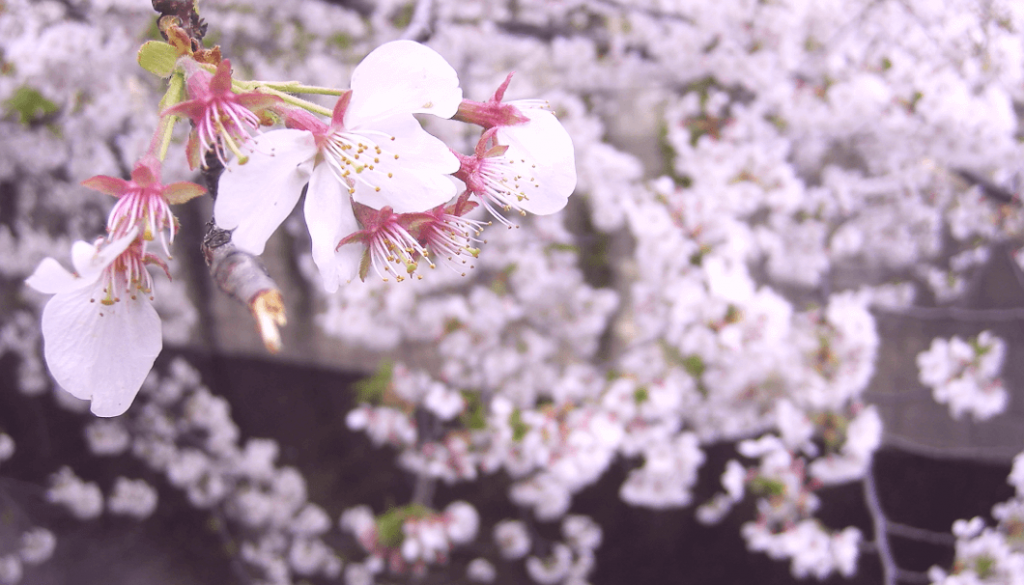
If pasteurized sake is the drink of choice, it’s a versatile option that can be served at a wide range of temperatures. It also has less acidity than wine, making it easier to pair with most foods. On the other hand, spring namazake are special unpasteurized sake made specifically to evoke the season. They have aromas of tropical fruits, flowers and feature a touch higher acidity to heighten the aromatic experience. These special seasonal releases are best served chilled.
Sometimes wine can be an easier choice for group events with multiple palates and interests. Flavorful white wines with a range from dry to sweet in style can create contrast as well as complementary pairings with umami rich dishes. Wine can also pair nicely with desserts, with some sweet wines providing very high acidity to create balance where sake doesn’t.
Sake & Wine for Japanese-Style Picnic Parties
Creativity is key to a successful Japanese-style picnic. Here are some famous dishes paired with namazake and white wine, if preferred.
■ Tsukasabotan ‘Senchu Hassaku’ Shiboritate Tokubetsu Junmai Nama Genshu – Wine Alternative: New Zealand Pinot Gris
■ Pairing: Tsukemono pickles and tamagoyaki Japanese omelet.
To begin a full day of imbibing in the warm weather, nothing sets the mood better than a crisp, dry namazake. Luckily, Tsukasabotan ‘Senchu Hassaku’ delivers just that and more. Aside from being dry, this shiboritate tokubetsu junmai nama genshu from Kochi exudes notes of persimmon and papaya, making the sake seem sweet-like while maintaining its fresh texture and ultra dry finish. These traits make Tsukasabotan a great pairing with pickles and tamagoyaki, both commonly found in bento boxes.
Pinot Gris from New Zealand is a great wine option that mimics Senchu Hassaku’s subtle dance between dry and seemingly sweet. Try both and see what you like best!
■ Hanahato Hatsushibori Colombe Junmai Ginjo Nama Genshu – Wine Alternative: Alsatian Gewürztraminer
■ Pairing: Onigiri
Enoki Shuzo from Hiroshima Prefecture makes an outstanding premium nama genshu with bright acidity, a spritzy texture and vibrant salted melon notes. The sake reaches 17% alcohol, but is barely noticeable on the palate. Onigiri are a serving of rice shaped into a triangle around a filling, often wrapped in seaweed. This sake pairs pleasantly with onigiri of all types, but specifically ume salted plum. The ume brings out the fruit in the sake and the savoriness of this plum rice snack.
Gewürztraminer from Alsace, France is a great alternative with relatively low acidity and rich notes of rose and lychee. While this wine could overpower soft ume flavors, it would pair exceedingly well with an onigiri filled with something like spicy tuna.
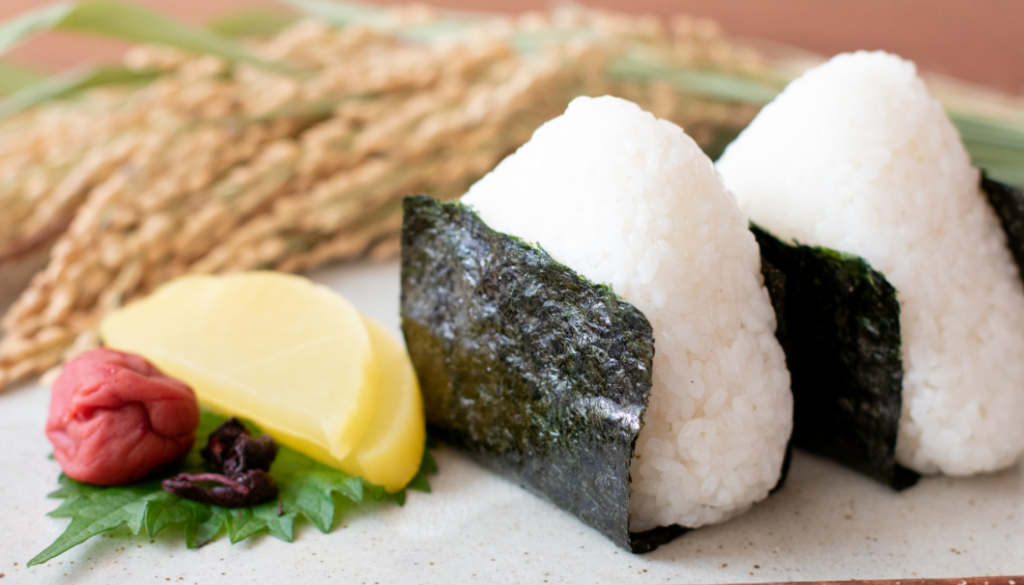
■ Gokyo Arabashiri Junmai Nama Genshu – Wine Alternative: GG German Riesling
■ Pairing: Karaage boneless fried chicken
A tried and true classic of the yearly spring nama arrivals is none other than Sakai Shuzo’s Gokyo Arabashiri from Yamaguchi. This sake is known for its fresh acidity and interesting interplay of textures ranging from a delicate tingle when first sipped, to a full-bodied heftiness when consumed. This sake is arabashiri, meaning that it’s taken at the first stage of pressing, before weight has been applied to the rice mash. This is the reason arabashiri sake have such interesting textures. Gokyo also boasts deep and luxurious flavors including golden apple and grilled lemon peel. This sake is the perfect complement to fried chicken, especially the Japanese style known as karaage.
A very similar parallel in the wine world would be a Grosses Gewächs Riesling from Germany. These Rieslings are dry, but opulent and flavorful. They usually also include a tiny spritz similar to Gokyo. Aromas are usually orchard fruit-driven, but also can include intense floral notes and hints of petrol with age.
■ Harushika Shiboribana “Spring Deer” Junmai Ginjo Nama – Wine Alternative: California Sauvignon Blanc
■ Pairing: Fruit Bowl (tangerine, strawberry and kiwi)
Another spring favorite is Harushika ‘Spring Deer’ by Imanishi Seibee Shoten from Nara Prefecture. This is a consistently exuberant nama from year to year, always expressing a touch of sweetness in contrast with its heightened crisp acidity. Aromas of green apple, melon and hard candy are the most prominent, then an elegant herbal tone emerges beneath the surface. This sake is great as an aperitif on its own, but pairs beautifully with fresh fruits and any blossom viewing treat with just a hint of sugar.
Sauvignon Blanc from California plays a similar role, providing ample citrus and tropical fruit aromas balanced by notes of grass or elderflower. Its fresh acidity with a tiny bit of sweetness parallels splendidly with Harushika’s spring namazake.
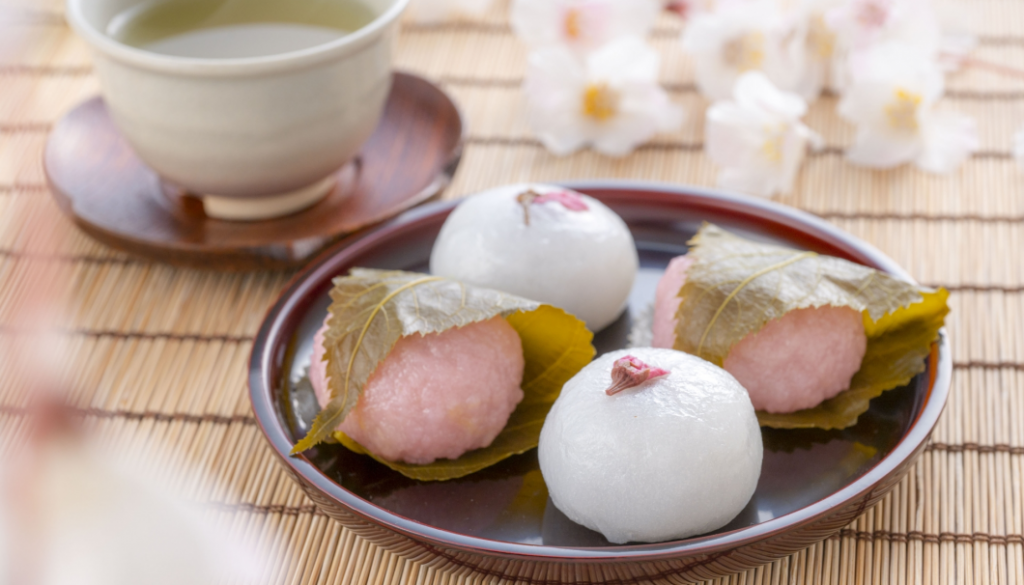
■ Ohyama Shiboritate Tokubetsu Junmai Nama – Wine Alternative: Moscato d’Asti, Italy
■ Pairing: Sakura Mochi
Last, but certainly not least is one of the tastiest of the bunch, Ohyama Shiboritate from Yamagata. Loaded with flavors of candied green plums, toasted rice, red gummy bears and Meyer lemon, this expressive namazake is truly unique. It also has sea salt and lime zest notes that complement its spritzy and acidic texture. One of the most iconic treats during hanami is sakura mochi, a rice cake filled with red bean paste and wrapped in a salted cherry blossom leaf. The salty leaf cuts through the powdery mochi flavor and the sweet red bean brings stability and balance to the experience.
This namazake is a suitable pairing for sakura mochi, but if wine suits your fancy, try a lightly sparkling Moscato d’Asti from the Piemonte region of Italy. It has sweetness to balance the rice cake and red bean, as well as floral and stone fruit aromas that add a nice dimension to the pairing.
Experiment and Enjoy Spring
Whether or not one prefers sake or wine at their hanami inspired party, there are many options to explore and combinations to experiment with. Let your mind run wild and most importantly, find family and friends that are open to trying a new custom and enjoy this most beautiful of seasons while it lasts.
*If you would like us to send you monthly updates and information, register here.


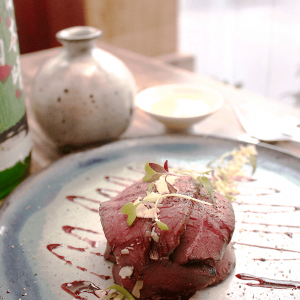
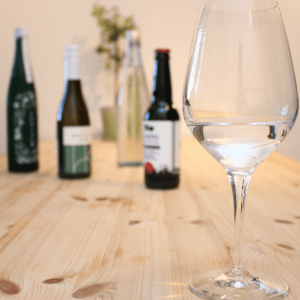

Comments